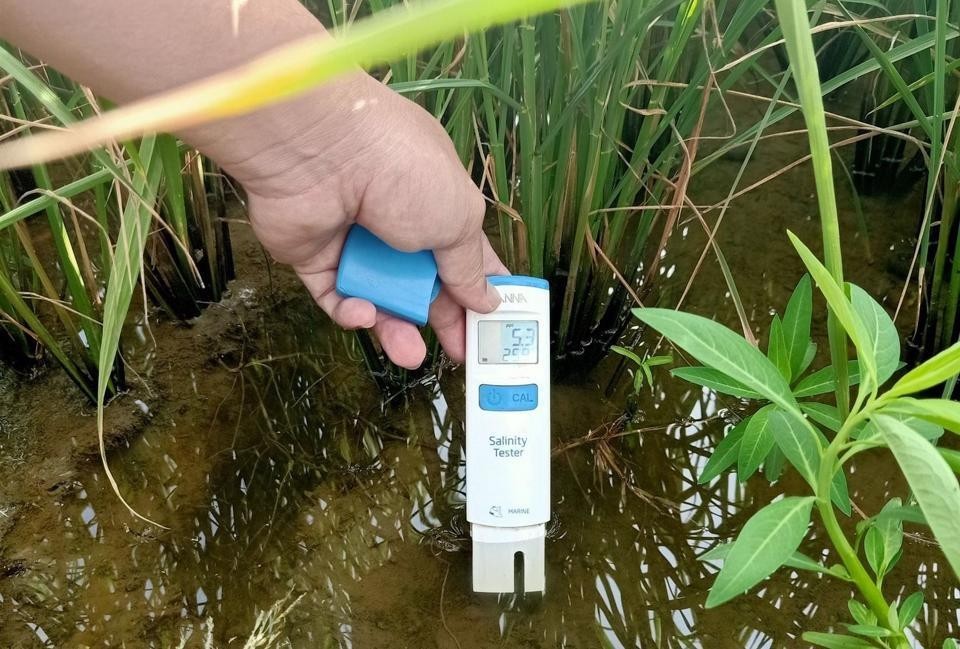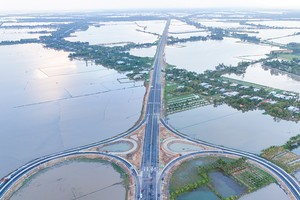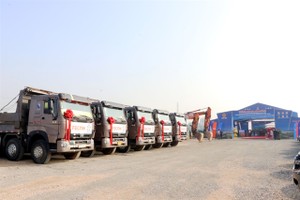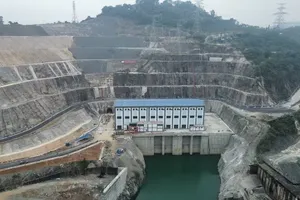
According to information from the Permanent Office of the National Steering Committee for Natural Disaster Prevention and Control, the saltwater intrusion in the Mekong Delta region has increased to risk level 2.
The forecast for saltwater intrusion trends from March 30 to 31 indicates a saline boundary of 4 per mille at the mouths of major rivers as follows: Vam Co Dong and Vam Co Tay rivers at 70-90km, Cua Tieu and Cua Dai rivers at 50-57km; Ham Luong river at 50-60km, Co Chien river at 40-50km, Hau river at 40-47km, and Cai Lon river at 40-45km.
According to the Permanent Office of the National Steering Committee for Natural Disaster Prevention and Control, starting on March 8, the Prime Minister issued Directive No. 19/CD-TTg, mandating a focused response to the peak period of saltwater intrusion in the Mekong Delta region.
Consequently, the National Steering Committee advises local authorities to closely monitor weather forecasts and disaster warnings, especially regarding heatwaves. Specifically, provinces and cities in the Mekong Delta region are urged to diligently implement Prime Ministerial Directive No.19/CD-TTg concerning the concentrated response to the peak period of saltwater intrusion in the Mekong Delta.
As of the afternoon of March 30, updates from the National Center for Hydro-Meteorological Forecasting suggest that the current heatwave in the Southern region is expected to continue for several more days, with minimal rainfall anticipated. From April 1, another heatwave is forecasted to sweep across nearly the entire country, spanning from the Northwest to the Northeast regions, from Thanh Hoa to Phu Yen provinces, and locally affecting the Central Highlands.
By April 4, the heatwave is forecasted to retreat from the Northeast region, followed by withdrawal from the Northwest region by April 5, although it will persist in the Southern region. With humidity levels hovering around 50-55 percent, the risk of wildfires remains high.
























